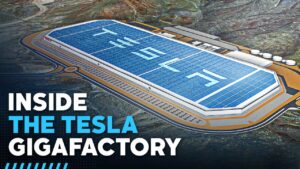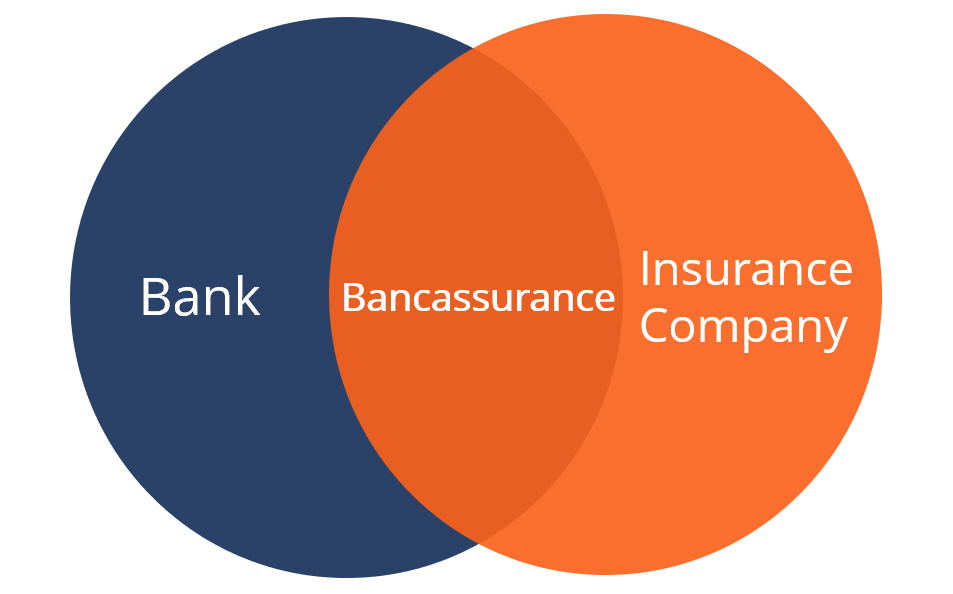Tesla was founded in 2003 with the aim of commercializing electric vehicles, starting with luxury sports cars and then moving on to more affordable options for the mass. Prior to Tesla, the market for EVs was relatively insignificant since the models were unsatisfactory. Tesla identified a potential market of environmentally conscious and wealthy customers and decided to enter this previously untapped market. Currently, it I sone of the world’s most valuable companies with a market capitalization of over $190 billion, and this is because of Tesla’s business model.
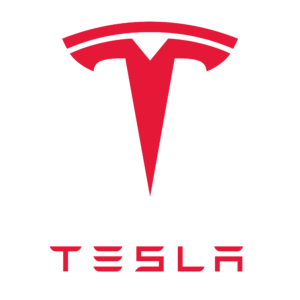
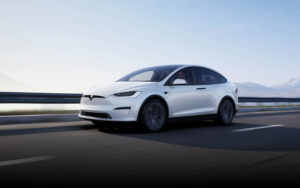
HISTORY
The failure of EVs in the late 90s served as a catalyst for the creation of Tesla motors. In 2003, Silicon Valley engineers Martin Eberhard and Mark Tarpenning started Tesla to create greener cars- EVs. Elon Musk was an early investor who took up financing and other roles. With their vision of popularising EVs, they created Roadster, a high end sports car. However, customising parts for this car was vert costly and almost drove Tesla into bankruptcy.
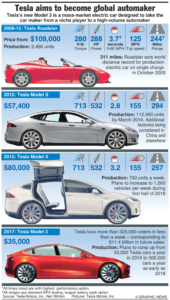
However, in October 2005, Elon Musk became the CEO and brought about drastic changes. He cut down the workforce by 25% and recalled 75% of the Roadsters. He also raised $40 million by debt financing and borrowed $465 million for the US government. Besides this, he also partnered with Daimler and made around 2450 Roadsters. As the customer appeal grew, in 2010, Tesla launched its IPO at Nasdaq and raised $226 million. It became the first American car company to go public after Ford in 1956. It then went on to release Model X, Model S and Model 3, passing Ford in market value in 2017.
VALUE PROPOSITIONS
- Premium electric cars – Tesla produces high-quality and environment friendly EVs, which currently does not face direct competition from any other traditional vehicle manufacturers
- Beautiful design – Tesla vehicles designs are outstanding and better as compared to other EV manufacturers.
- Long range batteries – The first Roadster had an amazing 244 mile range which made EVs more appealing. Currently, batteries can last over 15,000 cycles, which is the equivalent of 2,000,000 miles.
- Ultra fast acceleration – Some models can go from 0 to 60 mph in just 20 seconds.
- Supercharger network – Tesla has its own fast charging, automatic battery preconditioning supercharger network in the US, UK, Europe and most other countries.
- Autopilot – Some of the models offered by Tesla have the autopilot mode, that amounts to level 2 vehicle automation, which includes full self-driving capabilities.
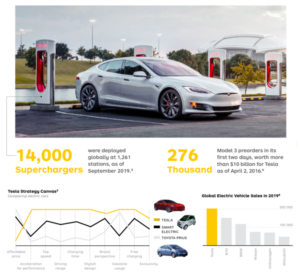
CUSTOMER SEGMENTS
Tesla’s target audience is a status-oriented and an environmental-friendly one. Currently most of its buyers are wealthy and have an income of more than a hundred thousand dollars a year. Its buyers have also generally found to be younger than the ones buying the traditional cars. Tesla’s business model strategy is to sell expensive cars and use the money for R&D to produce better and more affordable cars for all customer groups. It has been able to acquire significant brand loyalty – in 2014, the Tesla Model S was voted the “most loved car in America”.

KEY ACTIVITIES
Tesla’s key activity is to build factories to achieve economies of scale and produce EVs. In 2013, it introduced the Tesla Gigafactory with the goal of making EVs cheaper than gas vehicles. Apart from this, R&D plays a major role since the entire company is based on innovative technology and depends on producing better batteries and models and making it more affordable. It creates and maintains its own software that is present in all Tesla and provides a wide range of function. It also aims at streamlining production – reducing costs and increasing production capacity. Tesla does not face sales problems but delivery problems. Its biggest concern is that its not able to produce enough cars on time, and hence it aims at opening more factories to increase overall production.
REVENUE STREAMS
According to Tesla’s business model, its main source of revenue is its car sales. Each car costs an average of Rs.70 lakhs. Most of the revenue generated however is ploughed back into R&D to create more affordable family models. In the future, another potential revenue stream could be if Tesla allows other EVs to charge in its Supercharging Stations. This could work just like gas stations but for electric vehicles could be a source of income for them. Tesla has now generated profits for 4 consecutive quarters and continues to do well even after the pandemic.
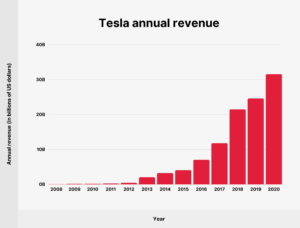
CHANNELS
Generally, car manufacturers use third-party dealers who take commissions to sell cars. However, Tesla showcases and sells only in its own stores. Company owned stores allows Tesla to control its brand image completely. Tesla establishes storerooms it’s apprising locations to increase awareness to its products. For example big shopping malls, where many people can walk in and ask about the models and their features. This is important to the strategy as their goal is to raise awareness, so that if not now, in the next 10 years they have customers. This is primarily why it is very easy to get a Tesla test drive. Tesla also provides excellent and prompt customer service and gives its customers the unique experience of building in designing the cars through its website.

FUTURE
Tesla’s mission is to accelerate the world transition to sustainable energy. The strategy is to productize the factories so that vehicle assembly can be automated at a high pace. It aims at using factory technology to be bigger and better. They are highly ambitious and have plans to build a pick-up trucks, electric trains, urban transport such as heavy public buses. Model Y, a crossover on Model 3, is an ultra low cost model that Tesla aims at manufacturing in the near future.

Although Tesla is the first company to make electronic vehicles popular at such a large scale, it might face threats and competition from other major car manufacturers in the future. It is not very difficult for major big vehicle manufacturers such as Audi, BMW, Ford, etc. to enter the EV market, which they haven’t done due to lack of demand. However, it is highly likely that these companies also start producing electronic vehicles. At this point, it’ll come down to quality, price and brand loyalty.
In conclusion, Tesla is the most successful electric vehicle manufacturing company in the world due to its innovative strategies and technology. It has able to withstand the covid-19 and did well even at the times of recession. If Tesla’s business model goes according to plan and it succeeds in making EVs a norm, it is likely to do better and better with time.


